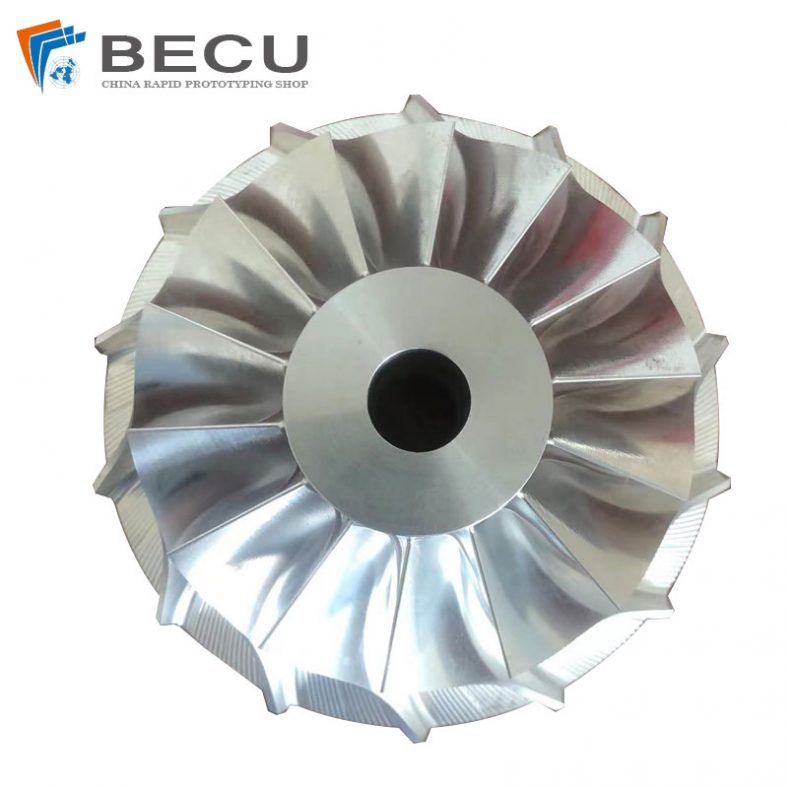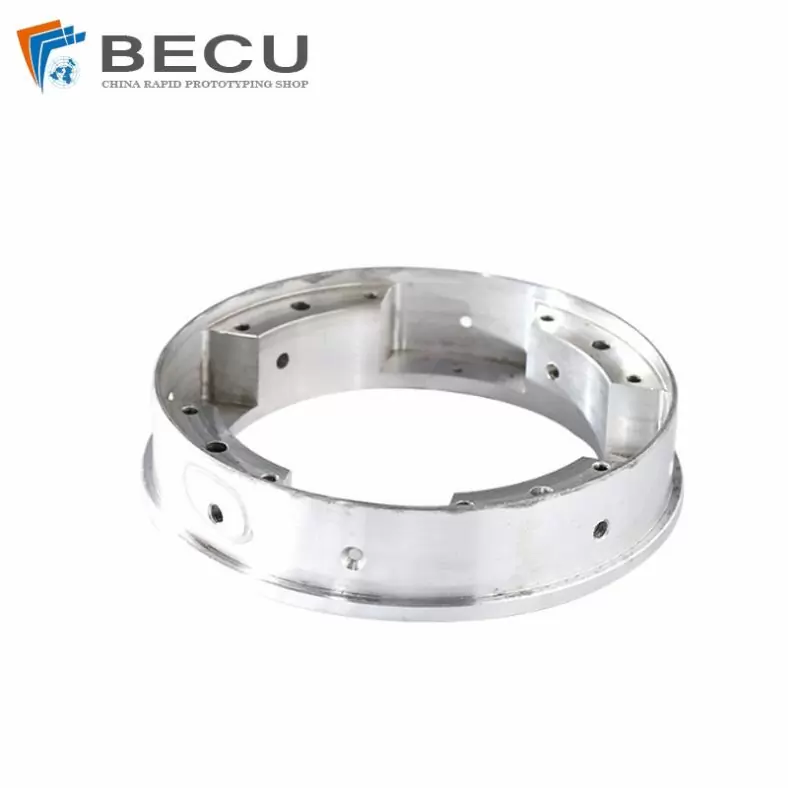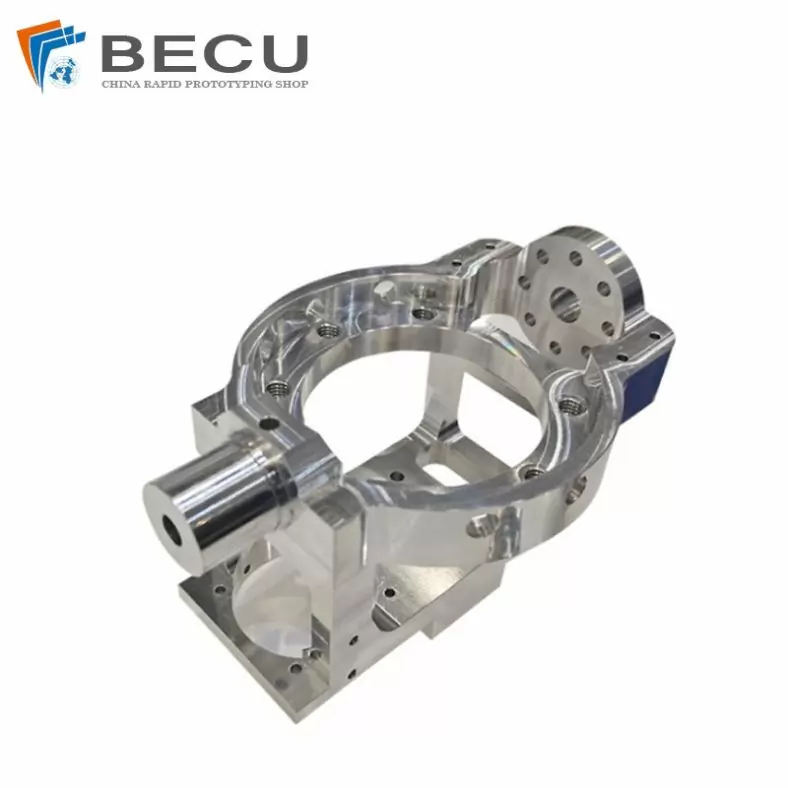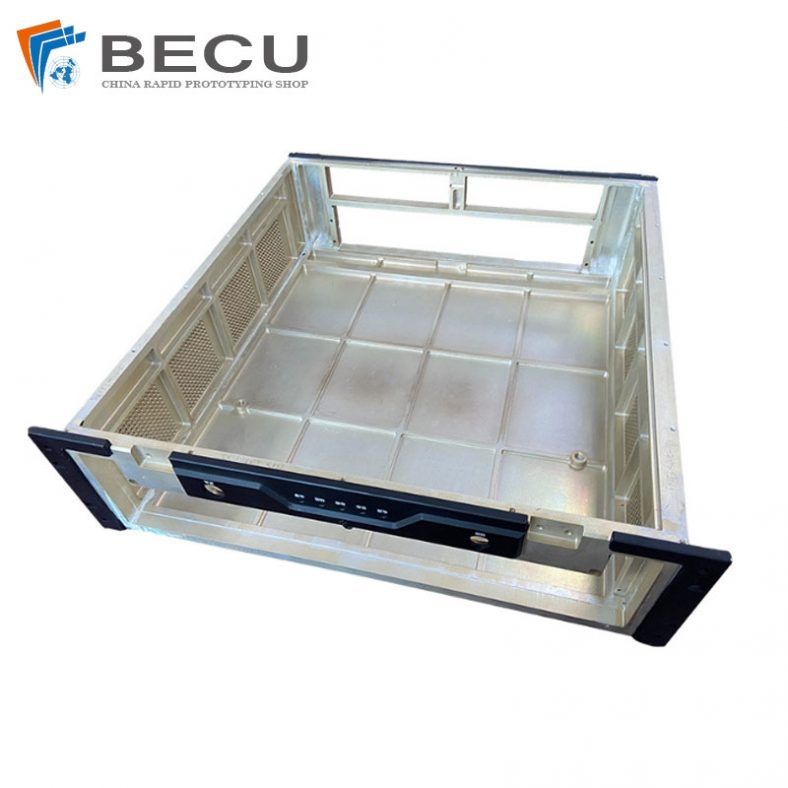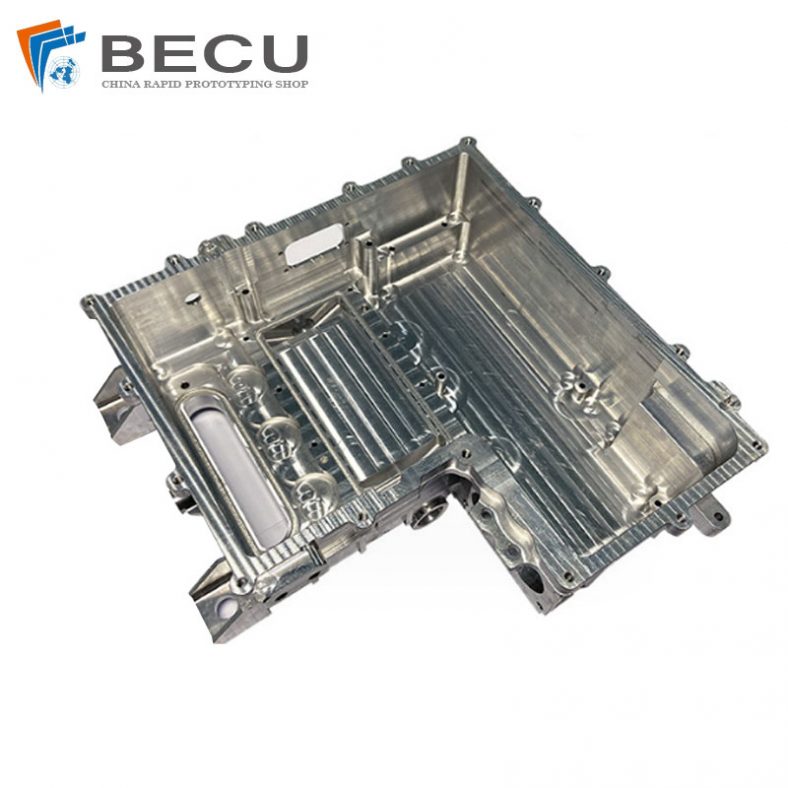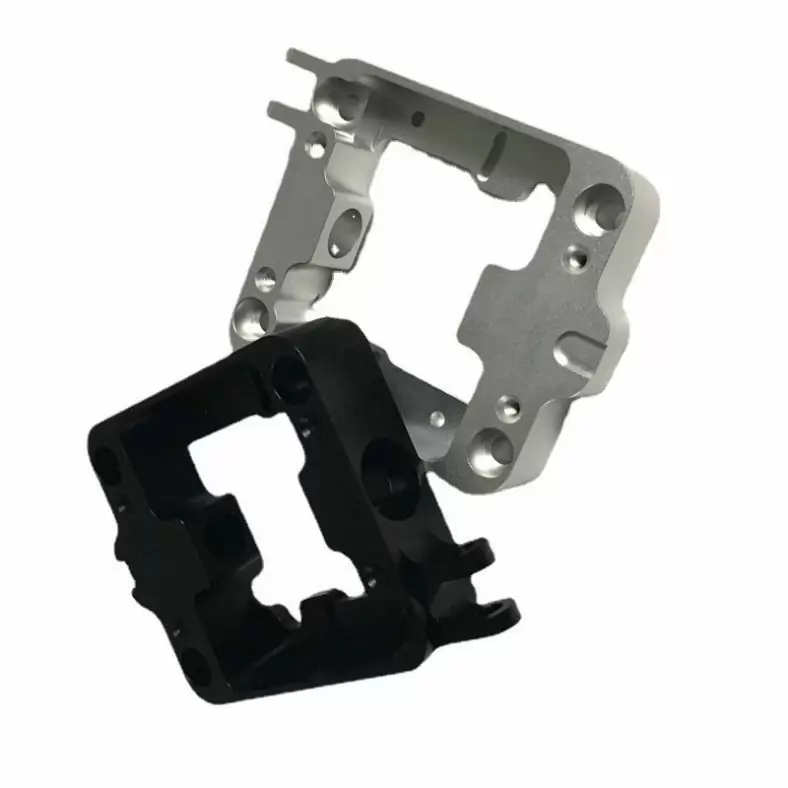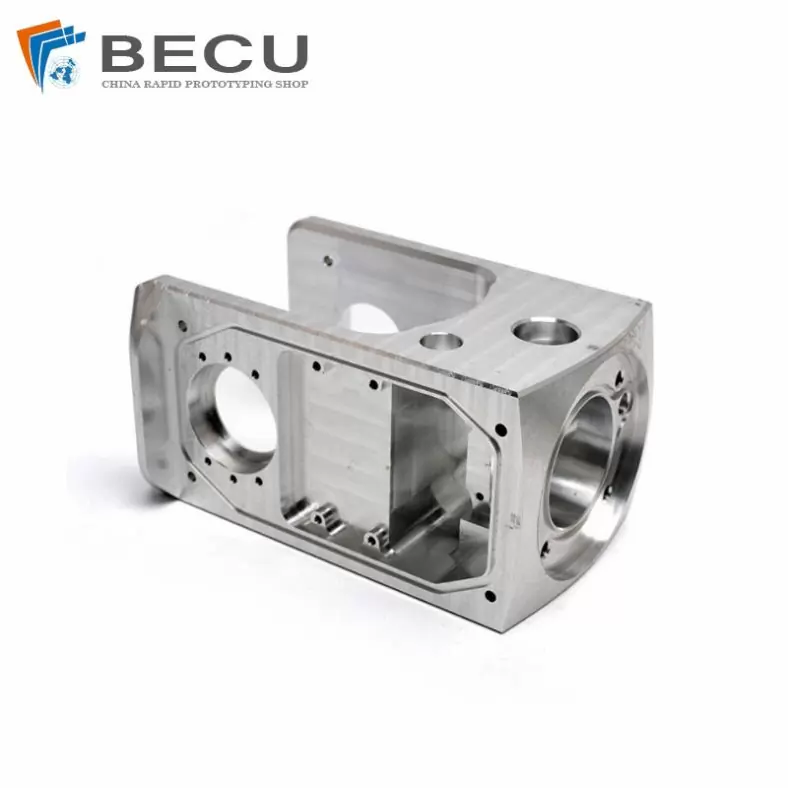Machining processes play a pivotal role in modern manufacturing industries, shaping raw materials into finished products with precision and accuracy. Among the many parameters that influence machining performance, the depth of cut (DOC) holds a significant place. Depth of cut refers to the distance by which the cutting tool penetrates the workpiece during a single pass. It is a critical factor that affects various aspects of machining, from tool wear and surface finish to cutting forces and chip formation. In this comprehensive article, we will delve into the intricacies of depth of cut in machining, explore its effects on the process, and discuss strategies for its optimal selection.
View More Articles:

Introduction to Depth of Cut in Machining
In the realm of modern manufacturing, where precision and efficiency are paramount, the concept of depth of cut (DOC) in machining takes center stage. This fundamental parameter wields significant influence over the outcomes of machining processes, dictating tool wear, surface quality, cutting forces, and more. As we embark on a comprehensive exploration of depth of cut, it’s essential to first establish a foundational understanding of its significance and the associated terminology.
What is Machining?
What Is CNC Machining? Machining, in its essence, is a transformative art within the manufacturing world. It involves the meticulous shaping and refinement of raw materials into finished products through the removal of excess material. This process relies on the use of specialized tools, often precision-engineered, to create intricately designed components across a multitude of industries. Whether it’s crafting the components for aeronautics, automobiles, electronics, or medical devices, machining stands as a cornerstone of modern production.
The Significance of Depth of Cut
As we delve into the nuances of machining, one concept emerges as pivotal in shaping the dynamics of the process: the depth of cut. This term refers to the measure of how deep a cutting tool penetrates into a workpiece during a single pass. While seemingly straightforward, the depth of cut bears the power to orchestrate a symphony of effects that reverberate throughout the machining process.
In essence, the depth of cut is the conductor that influences a multitude of factors, including tool wear, surface finish, cutting forces, and chip formation. It is a parameter that demands thoughtful consideration, as its judicious selection can tip the scales between efficient material removal and unintended consequences.
Terminology and Notation
Before we journey further into the complexities of depth of cut, let’s establish a solid foundation of terminology and notation. These linguistic tools serve as the bedrock for effective communication in the realm of machining:
- Depth of Cut (DOC): This is the fundamental distance by which the cutting tool plunges into the workpiece during a single machining pass. It essentially sets the stage for the extent of material removal.
- Radial Depth of Cut (RDOC): Referring to the distance from the tool’s centerline to the deepest point of the cut in a radial direction, RDOC governs the scale of material engagement along the radius of the workpiece.
- Axial Depth of Cut (ADOC): ADOC represents the vertical distance from the surface of the workpiece to the deepest point of the cut along the tool’s axis. It encapsulates the depth dimension along the tool’s travel direction.
- Width of Cut: The width of cut is the span along the workpiece’s surface that encounters the cutting tool’s action during a single pass. It’s a vital parameter that contributes to the overall material removal process.
- Cutting Speed (S): This parameter quantifies the relative velocity between the cutting tool and the material being machined. It’s a crucial determinant of how swiftly the material is removed.
- Feed Rate (f): Feed rate signifies the distance the cutting tool advances into the workpiece during one revolution or stroke. It plays a significant role in shaping the efficiency of the machining process.
With these foundational terms in place, we are well-equipped to embark on a comprehensive exploration of the depth of cut, dissecting its effects, delving into the influencing factors, unraveling strategies for optimal selection, and peering into the future of machining techniques. Let us journey deeper into the world of machining, where the depth of cut serves as a guiding star in the quest for precision and efficiency.
Effects of Depth of Cut
The depth of cut (DOC) is a parameter that wields a remarkable degree of influence over the intricacies of machining processes.
As the cutting tool journeys into the heart of the workpiece, a symphony of effects unfurls, each playing a distinctive role in shaping the outcome of the operation. Let’s delve into these effects, illuminating the profound consequences that the depth of cut bestows upon the world of machining.

Tool Wear and Tool Life
At the heart of the machining process lies a delicate interplay between cutting tools and workpieces. The depth of cut emerges as a central protagonist in this dynamic, metal casting a direct impact on tool wear and, by extension, the tool’s lifespan. As the cutting tool ventures deeper into the workpiece, a crescendo of forces, temperatures, and stresses converge. These intense conditions can lead to accelerated wear of the tool’s cutting edge, akin to the gradual erosion of a finely crafted sculpture.
Excessive tool wear is more than a mere inconvenience—it jeopardizes the precision and integrity of the machining process. A worn-out tool diminishes dimensional accuracy, induces surface imperfections, and poses the risk of catastrophic failure. As such, the depth of cut must be carefully calibrated to strike a harmonious balance between effective material removal and the preservation of the tool’s cutting edge.
Surface Finish
The quality of a machined surface is a visual and tactile testament to the craftsmanship behind the process. Within the realm of surface finish, the depth of cut emerges as an influential maestro, orchestrating a symphony of textures. Smaller depths of cut typically yield smoother surface finishes—a result of reduced tool wear and lower vibrations. The delicate caress of a finely tuned tool interacting with the workpiece delivers a canvas of silkiness to the tactile and visual senses.
However, the role of the depth of cut is not limited to finesse alone. Larger depths of cut introduce a dynamic range of textures, giving birth to surfaces with distinctive patterns and features. While such patterns may evoke a sense of aesthetic depth, they can also be accompanied by roughness due to increased tool-chatter interactions and heightened cutting forces. The depth of cut, in this context, operates as an artist’s brush, painting surfaces with nuanced strokes that balance functionality and aesthetics.
Cutting Forces
Within the world of machining, cutting forces are the unseen actors that shape the play. As the depth of cut deepens, these forces ascend, mirroring the tool’s immersion into the workpiece. The increased engagement between the tool and the material results in heightened cutting forces, akin to the strains felt when navigating uncharted territories.
These forces, while essential for material removal, carry implications that extend beyond the immediate. High cutting forces can compromise the stability of the machining process, introducing vibrations and chatter. The harmonious rhythm of the operation can devolve into a cacophony, jeopardizing both the precision of the component and the integrity of the cutting tool itself. Here, the depth of cut emerges as a conductor, directing the symphony of forces toward a harmonious crescendo.
Chip Formation and Evacuation
The dance between the cutting tool and the workpiece yields more than finished components—it births chips, the tangible remnants of material removal. The depth of cut governs the formation and evacuation of these chips, guiding their journey from creation to expulsion. Deeper cuts yield thicker chips, casting a layer of complexity upon the choreography of chip evacuation.
Chip evacuation holds pivotal importance; an inadequately managed evacuation process can lead to congestion within the cutting zone, akin to a traffic jam within the heart of production. When chips accumulate and linger, they become prone to recutting—a phenomenon that inflicts surface imperfections, intensifies cutting forces, and triggers elevated temperatures. The depth of cut, in this regard, is a choreographer, orchestrating the fluid dance of chip evacuation to ensure a seamless and unobstructed flow.
As we traverse the depths of machining, the effects of the depth of cut emerge as a medley of harmonies and contrasts, each contributing to the grand symphony of material transformation. In the following sections, we’ll unfurl the factors that sway the choice of depth of cut, navigate the labyrinth of selection strategies, and glimpse the vistas of future trends that beckon from the horizon.
Factors Influencing Depth of Cut
The selection of an optimal depth of cut (DOC) in machining is a nuanced art that requires careful consideration of several interwoven factors. Each of these factors holds a brushstroke in the canvas of machining performance, influencing not only the immediate outcome but also the long-term viability of the process. Let’s embark on a journey through the landscape of these influential factors, shedding light on how they shape the tapestry of machining.
Material Properties
Materials are the building blocks upon which the symphony of machining is composed. The properties of the workpiece material wield a profound influence on the choice of depth of cut. A material’s hardness, toughness, and thermal conductivity dictate how it will interact with the cutting tool. Harder materials necessitate smaller depths of cut to prevent excessive tool wear and chipping, while softer materials may allow for larger depths of cut without jeopardizing tool integrity.
Additionally, considerations such as workpiece temperature sensitivity and chip formation characteristics come into play. Brittle materials may require cautious handling to avoid chipping, while heat-sensitive materials demand moderation in depth to prevent thermal damage. In essence, material properties compose the melody to which the depth of cut dances, and understanding this composition is essential to achieving harmonious machining.
Machine Tool Capability
The machine tool is the stage upon which the machining process unfolds. Its rigidity, power, and capabilities fundamentally influence the depth of cut that can be employed. A robust and rigid machine tool can handle higher cutting forces associated with larger depths of cut without compromising stability. Conversely, a less robust machine tool may require more conservative depth of cut strategies to maintain stability and accuracy.
Machine tool capability isn’t solely about power—it’s also about precision. Modern contract cnc machining centers boast advanced control systems that enable dynamic adjustments during cutting. These systems allow for adaptive machining, where the depth of cut can be optimized in real-time based on the actual cutting conditions. Thus, machine tool capability isn’t just a backdrop; it’s a dynamic partner that influences the choreography of the depth of cut.
Cutting Tool Characteristics
A cutting tool isn’t merely an instrument; it’s a conduit between the machinist’s intent and the workpiece’s transformation. The characteristics of the cutting tool are paramount in dictating the depth of cut that can be employed effectively. Cutting tool geometry, material, and coatings determine how well the tool can endure the rigors of machining at varying depths.
High-performance coatings and advanced tool materials can extend tool life and enable more aggressive depth of cut strategies. Tool geometry, including the number and arrangement of cutting edges, can influence chip formation, cutting forces, and heat distribution. Cutting tools are the artists wielding the brush that shapes the depths, and selecting the right tools is akin to choosing a virtuoso to perform a concerto.
Machining Operation Type
Machining encompasses an array of operations, each with its own nuances and objectives. The type of machining operation being performed is a pivotal factor in determining the appropriate depth of cut. Roughing operations, which focus on material removal, often employ larger depths of cut to quickly clear away excess material. The emphasis here is on efficiency rather than surface finish.
In contrast, finishing operations prioritize surface quality and dimensional accuracy. Smaller depths of cut are favored in finishing to achieve smooth surfaces devoid of imperfections. Precision operations like profiling and contouring also require meticulous control over the depth of cut to ensure intricate geometries are faithfully replicated.
In essence, the machining operation type is the script that guides the depth of cut’s role within the production. It determines whether the depth of cut is a soloist in a symphony of material removal or a maestro conducting a masterpiece of surface perfection.
As we traverse the landscape of these factors, it becomes clear that the choice of depth of cut isn’t a solitary decision—it’s a symphony orchestrated by the interplay of material properties, machine tool capabilities, cutting tool characteristics, and the specific machining operation at hand. The conductor’s baton may be held by the machinist, but the score is composed by the harmonious alignment of these factors.
Selection of Depth of Cut
Amidst the intricate world of machining, where precision dances with material, and efficiency waltzes with quality, the selection of an optimal depth of cut (DOC) emerges as a pivotal decision. This choice, often hinging on a delicate equilibrium, shapes the dynamics of material removal, tool life, and surface finish. To navigate this nuanced decision-making process, machinists employ a palette of approaches that range from cautious to audacious. Let’s journey through these selection strategies, guided by empirical wisdom and the harmonies of mathematical modeling.
Conservative vs. Aggressive Approaches
Within the spectrum of depth of cut strategies, two distinct philosophies stand out: conservatism and aggression. A conservative approach is characterized by the deliberate choice of smaller depths of cut. This strategy prioritizes tool life and surface finish, offering the assurance of extended cutting tool longevity and smoother surfaces. However, the trade-off lies in the sacrifice of material removal rates, as the process becomes more time-consuming.
On the opposite end of the spectrum, the aggressive approach embraces larger depths of cut. Here, the emphasis is on rapid material removal and higher machining efficiency. The allure of swift progress beckons, but it comes at the cost of heightened tool wear, increased cutting forces, and potentially rougher surface finishes.
Balancing these two approaches is akin to walking a tightrope, a feat that requires an intimate understanding of the material being machined, the capabilities of the machine tool, and the intricacies of the cutting tools in play. It’s a delicate dance that reflects the machinist’s intuition, honed through years of experience and experimentation.
Empirical Guidelines
Embedded within the annals of machining history lie a treasure trove of empirical guidelines. These nuggets of wisdom, often distilled from years of practical experience, serve as invaluable compasses in the realm of depth of cut selection. Manufacturers across industries have painstakingly accumulated data on optimal depth of cut values for specific materials, cutting tools, and machining operations.
These empirical guidelines serve as the North Star for machinists, providing a starting point for depth of cut selection. They offer a safe harbor from which to embark on machining journeys, with the understanding that fine-tuning may be required based on real-world observations. While empirical guidelines provide a solid foundation, they are not cast in stone—each machining scenario possesses its own unique nuances, demanding a certain degree of adaptability.
Mathematical Modeling and Simulation
The advent of advanced machining software and simulation tools has ushered in a new era of precision and foresight. Mathematical modeling and simulation enable machinists to peer into the future of a machining process, predicting the consequences of different depth of cut strategies. These simulations take into account a myriad of variables, from cutting forces to temperatures, allowing for a holistic understanding of the machining environment.
With these virtual laboratories at their disposal, machinists can experiment with various depth of cut scenarios before ever touching the workpiece. They can explore the effects of different approaches, identifying the sweet spot that balances material removal rates, tool life, and surface finish. Mathematical modeling transforms depth of cut selection from a game of chance into a realm of calculated probabilities.
As we navigate the labyrinth of depth of cut selection, we’re reminded that it’s not a solitary decision—it’s a symphony composed of conservative and aggressive notes, harmonized by empirical wisdom and guided by the precision of mathematical modeling. The machinist steps onto the conductor’s podium, holding the baton that shapes the composition of machining success.
Advanced Machining Techniques and Depth of Cut
The realm of CNC machining is one of constant evolution, where innovation and creativity converge to refine the art of material transformation. In this intricate dance between cutting tools and workpieces, advanced machining techniques emerge as the choreographers that push the boundaries of what’s possible. As we explore the synergy between these techniques and the depth of cut (DOC), we uncover a world where precision, efficiency, and ingenuity intertwine.
High-Speed Machining
High-speed machining (HSM) is a technique that dares to accelerate the tempo of traditional machining practices. By significantly elevating cutting speeds and feeds, HSM aims to create a symphony of material removal that transcends conventional constraints. At the heart of HSM’s allure lies the quest for higher material removal rates and enhanced surface finish—a duet where depth of cut plays a decisive role.
In HSM, the depth of cut becomes a conductor that harmonizes with elevated speeds to orchestrate a performance that defies conventional wisdom. The heightened dynamics of the process demand a delicate calibration of the DOC to prevent overstressing the cutting tools, compromising tool life, and introducing unwanted vibrations. As HSM redefines the cadence of machining, the depth of cut adapts to become an essential note in this intricate melody.
Trochoidal Milling
In the theater of machining, where intricate contours and demanding geometries take center stage, trochoidal CNC milling emerges as a choreography of finesse. This technique involves machining along a circular path with varying depths of cut, creating a dance that optimizes material engagement and chip evacuation. The depth of cut here is not static; it’s a dynamic partner in a waltz that shapes surfaces with precision.
In trochoidal milling, the depth of cut performs a fluid pas de deux with the circular motion, allowing for continuous and efficient material removal. The technique’s ability to mitigate the effects of tool engagement and enhance chip evacuation aligns with the depth of cut to sculpt intricate features while maintaining the delicate balance between accuracy and efficiency.
Adaptive Machining
In a world that embraces connectivity and real-time insights, machining has embarked on a journey of adaptability. Adaptive machining leverages the power of sensors and data analytics to dynamically adjust machining parameters, including the depth of cut, based on live data feedback. Here, the depth of cut evolves from a predetermined setting to a variable element that responds to the nuances of the machining environment.
Adaptive machining relies on a symphony of sensors that gather information about cutting forces, temperatures, and tool wear. This information is then harmonized by algorithms that orchestrate adjustments to optimize the machining process. The depth of cut, within this context, becomes a note that adjusts itself in harmony with the demands of the material, the cutting tool, and the machine tool. It’s a testament to the fusion of technology and technique, where the depth of cut becomes a partner in a dance of real-time precision.
As we venture into the realm of advanced machining techniques, we encounter a symphony that invites the depth of cut to take center stage, pushing the boundaries of what was once deemed possible. High-speed machining, trochoidal milling, and adaptive machining are chapters in a story where innovation and tradition coalesce, reminding us that the depth of cut isn’t a static parameter—it’s a dynamic partner in the evolution of machining excellence.
Case Studies
In the realm of manufacturing, where precision and reliability are paramount, the interplay between depth of cut (DOC) and machining processes takes center stage. Let’s embark on a journey through three case studies, each from a different industry—aerospace, automotive, and medical equipment manufacturing. In each case, we’ll explore how the selection of depth of cut influences outcomes, shapes efficiency, and underscores the pursuit of excellence.
Aerospace Component Machining
- Scenario: Aerospace components demand meticulous precision, unfaltering reliability, and exceptional material quality. In this case study, we delve into the machining of intricate parts for aviation—a realm where performance is non-negotiable and safety is paramount.
- Depth of Cut Considerations: Aerospace machining often involves complex geometries, exotic materials, and stringent tolerances. The depth of cut is a key determinant of material removal rates, tool wear, and surface finish. Conservative depth of cut strategies are often employed to ensure that the integrity of the material is maintained and the intricacies of the design are faithfully replicated. This approach prioritizes longer tool life and smoother surface finishes.
- Impact of Depth of Cut: The choice of depth of cut plays a pivotal role in the manufacturing of aerospace components. While slower material removal rates might be accepted in exchange for dimensional accuracy and surface perfection, the intricate balancing act involves optimizing the depth of cut to ensure both efficiency and quality. Mathematical modeling and simulation are often employed to predict how different depths of cut influence tool wear, surface finish, and overall performance.
Automotive Part Production
- Scenario: The automotive industry thrives on efficiency, cost-effectiveness, and mass production. In this case study, we delve into the machining of components that drive the automotive world forward.
- Depth of Cut Considerations: Automotive part production is often characterized by high-volume manufacturing with tight production schedules. The choice of depth of cut is influenced by the need for rapid material removal rates while maintaining acceptable surface finishes. Aggressive depth of cut strategies are commonly employed during roughing operations to achieve optimal material removal rates. However, during finishing operations, smaller depth of cuts are often favored to ensure fine surface quality.
- Impact of Depth of Cut: The impact of depth of cut in automotive part production is twofold. On one hand, aggressive depths of cut drive the efficiency and cost-effectiveness that the industry demands. On the other, the transition to smaller depths of cut during finishing operations ensures that the final products meet the aesthetic and functional requirements expected by consumers. The depth of cut becomes a strategic lever that balances production speed, cost-efficiency, and part quality.
Medical Equipment Manufacturing
- Scenario: The medical equipment industry revolves around precision, reliability, and biocompatibility. In this case study, we explore the machining of components for medical devices where surface finish and dimensional accuracy are of utmost importance.
- Depth of Cut Considerations: Medical equipment manufacturing demands unparalleled precision. The depth of cut directly affects surface quality, which is vital to ensure the biocompatibility and functionality of medical devices. Smaller depths of cut are often preferred during both roughing and finishing operations to achieve exceptional surface finishes and dimensional accuracy. A conservative approach to depth of cut aligns with the meticulous nature of medical equipment manufacturing.
- Impact of Depth of Cut: The depth of cut directly influences the functionality and quality of medical devices. In applications such as implant manufacturing, where the interaction between the device and the human body is critical, the depth of cut governs the smoothness of surfaces and the absence of imperfections. The intimate correlation between depth of cut and surface quality is a testament to the meticulous nature of medical equipment manufacturing.
Through these case studies, we journeyed through diverse industries—aviation, automotive, and medical equipment manufacturing—and witnessed how depth of cut shapes outcomes, influences efficiency, and underscores the pursuit of precision. In each scenario, the choice of depth of cut became a strategic decision, carefully calibrated to achieve a delicate balance between production demands, quality expectations, and the demands of the application.
Challenges and Limitations
While the depth of cut (DOC) parameter in machining wields a remarkable degree of influence, it also navigates a landscape rife with challenges and limitations. As manufacturers strive to orchestrate the perfect harmony between material removal and precision, they must grapple with the complexities posed by thermal considerations, vibrations and chatter, and the machinability of difficult materials. Let’s explore these challenges and limitations that underscore the delicate balance machinists must strike.
Thermal Considerations
As the cutting tool journeys into the heart of the workpiece, it encounters an environment of intense friction and heat generation. Deeper cuts, which necessitate more engagement between the tool and the material, can exacerbate the thermal challenges. Elevated temperatures can lead to thermal expansion of the workpiece, dimensional inaccuracies, and even material deformation. Thermal stresses introduced by high temperatures can compromise the structural integrity of the material, resulting in premature failure.
Mitigating thermal challenges demands a twofold approach: optimizing cutting parameters, including the depth of cut, and implementing effective cooling strategies. While aggressive depths of cut might yield higher material removal rates, they also intensify heat generation. Conversely, conservative depths of cut might reduce heat, but at the cost of extended machining times. Manufacturers must walk the fine line between efficient material removal and thermal management, with the depth of cut playing a crucial role in achieving this equilibrium.
Vibrations and Chatter
In the symphony of machining, vibrations and chatter emerge as discordant notes that threaten the precision and integrity of the performance. Vibrations are oscillations that occur during machining, often triggered by dynamic interactions between the cutting tool, workpiece, and machine tool. Chatter is a more pronounced form of vibration, characterized by sustained and self-excited oscillations. Both vibrations and chatter can degrade surface finish, compromise dimensional accuracy, and accelerate tool wear.
The depth of cut is intimately linked with the propensity for vibrations and chatter. Deeper cuts can intensify these undesirable phenomena, particularly when the machining dynamics are not optimally tuned. Manufacturers deploy an arsenal of strategies to combat vibrations and chatter, from enhancing machine rigidity to employing advanced cutting tool geometries. The depth of cut, in this context, becomes a critical parameter to control the dynamic interactions and ensure a harmonious machining process.
Machinability of Difficult Materials
In the world of machining, not all materials are created equal. Some materials, such as superalloys, hardened steels, and composites, present challenges that demand a delicate touch. These difficult-to-machine materials exhibit variations in hardness, toughness, and thermal conductivity that impact the choice of depth of cut. While larger depths of cut might yield efficient material removal rates, they also increase the risk of tool wear, tool chipping, and material deformation.
The depth of cut in machining difficult materials becomes a strategic lever that requires meticulous consideration. Manufacturers must balance the desire for efficiency with the demands of material characteristics. Smaller depths of cut might be favored to prevent excessive tool wear and maintain dimensional accuracy. However, advancements in cutting tool materials, coatings, and tool geometries are constantly pushing the boundaries of what can be achieved, allowing for more aggressive depth of cut strategies even with challenging materials.
In the ever-evolving realm of machining, the depth of cut navigates a landscape fraught with thermal challenges, vibrations and chatter, and the intricacies of difficult-to-machine materials. Manufacturers must approach these challenges with a holistic understanding, recognizing the role that the depth of cut plays in either amplifying or mitigating these issues. By doing so, machinists craft a symphony where precision, efficiency, and innovation harmonize in the pursuit of machining excellence.
Conclusion
In the intricate world of manufacturing, where precision, efficiency, and innovation intersect, the depth of cut (DOC) emerges as a pivotal parameter that orchestrates a symphony of effects. From aerospace to automotive to medical equipment manufacturing, the choice of depth of cut shapes outcomes, influences efficiency, and underscores the pursuit of excellence. Through empirical wisdom, mathematical modeling, and a myriad of machining techniques, manufacturers navigate a labyrinth of factors and considerations to select the optimal depth of cut for each scenario.
The dance between the cutting tool and the workpiece is a delicate one, influenced by material properties, machine tool capabilities, cutting tool characteristics, and the specific machining operation at hand. Material removal rates, tool wear, surface finish, and more all pivot on the balance struck within the depth of cut. As manufacturers traverse conservative and aggressive approaches, draw inspiration from empirical guidelines, and harness the power of mathematical modeling, they sculpt a masterpiece of precision that redefines the possibilities of machining.
Yet, the journey isn’t without its challenges and limitations. Thermal considerations, vibrations and chatter, and the machinability of difficult materials cast shadows on the path. Manufacturers must navigate these complexities with a discerning eye, recognizing that the depth of cut plays a role not only in amplifying these challenges but also in mitigating them. As machining technologies continue to evolve, so too does the depth of cut’s role in shaping the symphony of manufacturing.
In the end, the depth of cut is more than a parameter—it’s a conductor, orchestrating the harmonious interplay of forces, materials, and techniques. It’s a decision that marries tradition with innovation, intuition with data, and precision with artistry. As manufacturers continue to push the boundaries of what’s achievable, the depth of cut remains a steadfast partner, guiding the way to a future where machining excellence knows no limits.


